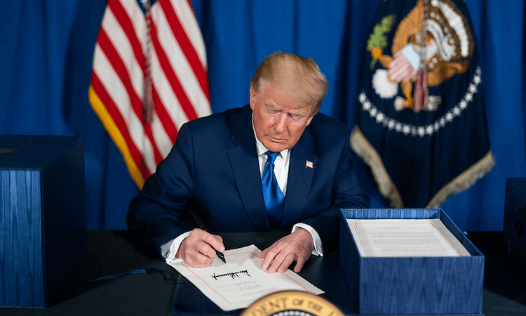Payment is being processed. Please do not refresh or close this page until your payment is complete.
 Book an Appointment
Book an Appointment

With President Trump's return, global families on H-4 visas are now facing real concerns over potential restrictions on work permits. As H-4 spouses contribute in vital sectors and navigate lengthy green card backlogs, any changes to H-4 work authorization could greatly impact their livelihoods and integration into U.S. society.
With the return of President Donald Trump, families of foreign workers on H-4 visas face renewed concerns about the possible end of their work authorization.
H-4 visas, issued to spouses of H-1B workers, have allowed many qualified professionals to pursue careers and contribute economically to the U.S. Losing this authorization would impact not only family incomes but also integration into American life.
The Importance of the H-4 Work Permit
For many on H-4 visas, work authorization (EAD) represents more than employment. It provides essential opportunities such as getting a Social Security Number, opening bank accounts, and obtaining a driver’s license. Without these, H-4 holders lose not only income but also key ways to integrate and contribute to their communities.
How the EAD Rule Came to Be
The EAD rule for H-4 spouses was introduced in 2015 during the Obama administration. This change helped address backlogs in green card processing, especially for highly skilled workers in the EB-2 and EB-3 categories.
For many families, securing green cards can take years or even decades. The EAD option gave spouses a way to work legally while waiting for permanent residency.
Trump’s “Hire American” Policy and H-4 Restrictions
During his previous term, Trump introduced the “Buy American, Hire American” order to prioritize U.S. jobs. As part of this policy, his administration proposed revoking H-4 work authorization, affecting thousands of families. Although this rule was not finalized, it signalled potential limitations on H-4 work permits.
Biden Administration’s Action
The Biden administration reversed Trump’s plan and kept the H-4 work permits in place. For families, this was a relief, allowing spouses to continue contributing to fields like healthcare, technology, and finance.
As attorney Ashwin Sharma notes, “Eliminating H-4 work permits would have been a severe economic blow, particularly for families already facing long green card wait times.”
Potential Visa Changes
With Trump’s return, his administration is expected to focus on policies prioritizing American workers, potentially targeting H-4 work permits once again.
This development has left many families with long green card wait times anxious about losing a vital source of income and professional integration.
If the H-4 work permits are indeed revoked, it would disrupt careers, financial stability, and the ability of these families to contribute fully to their communities.
Ongoing Legal Challenges to the EAD Rule
The H-4 EAD rule has faced legal challenges since its beginning. Organizations like Save Jobs USA argue that allowing H-4 spouses to work increases job competition for Americans.
In 2015, they filed a lawsuit claiming the Department of Homeland Security lacked authority to grant work authorization to H-4 visa holders. The courts upheld the EAD rule, and as of 2023, it remains intact.
What’s Next for H-4 Visa Holders?
With Trump’s return, many families are concerned about the future of the H-4 work permit. They wonder not just if the permit will be affected but when any changes might take place.
For now, the uncertainty around H-4 work permits and employment remains a significant worry, especially for families who have already waited years for permanent residency.
Conclusion
The future of H-4 work permits is uncertain, with possible changes looming. Families, especially those waiting for U.S. residency, are bracing for potential impacts. For now, H-4 visa holders and their families await clarity, hoping for a path that allows them to continue contributing to the U.S. economy while pursuing permanent residency.
Source: https://travelobiz.com/will-h-4-work-permits-end-what-trumps-return-means-for-visa-holders/